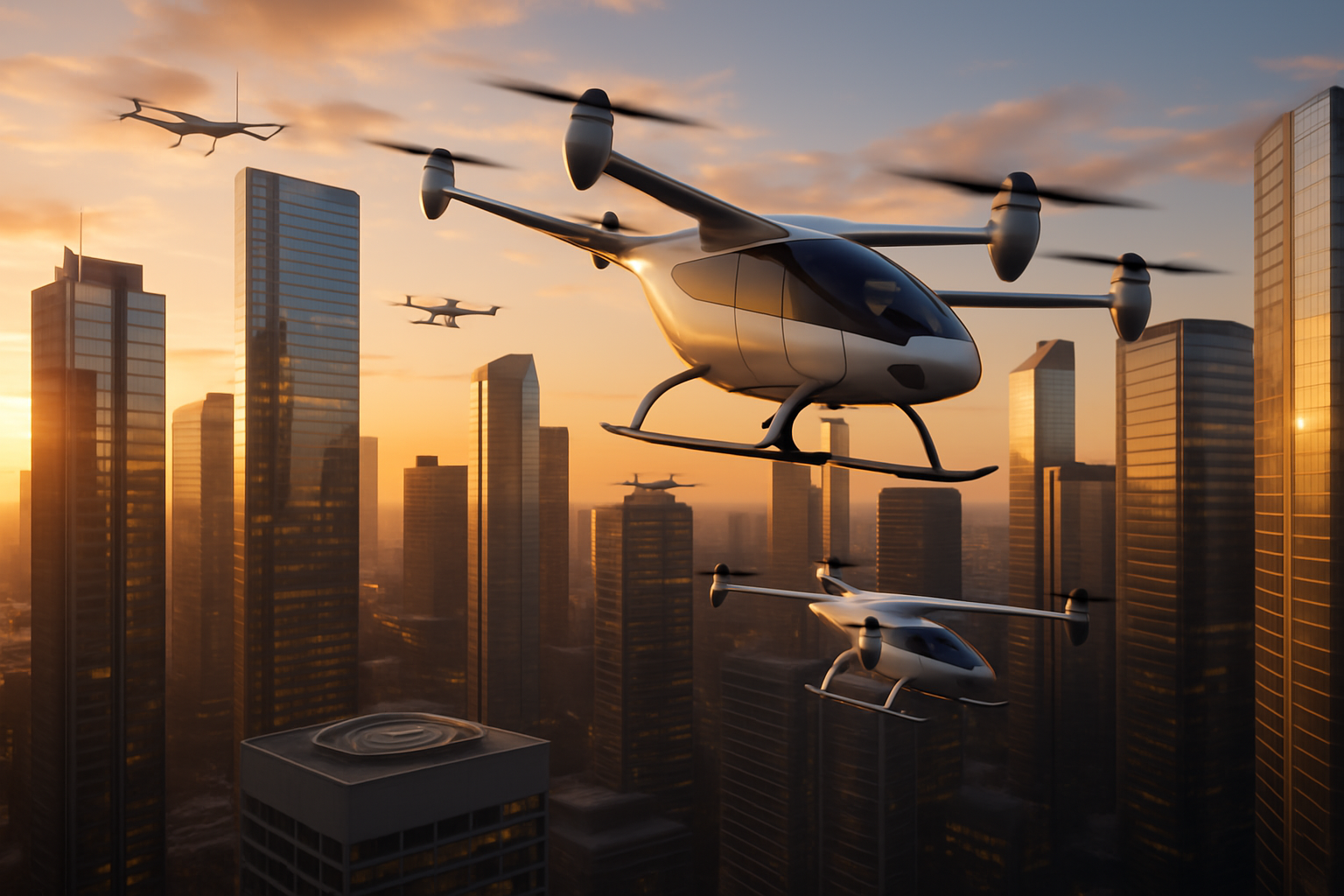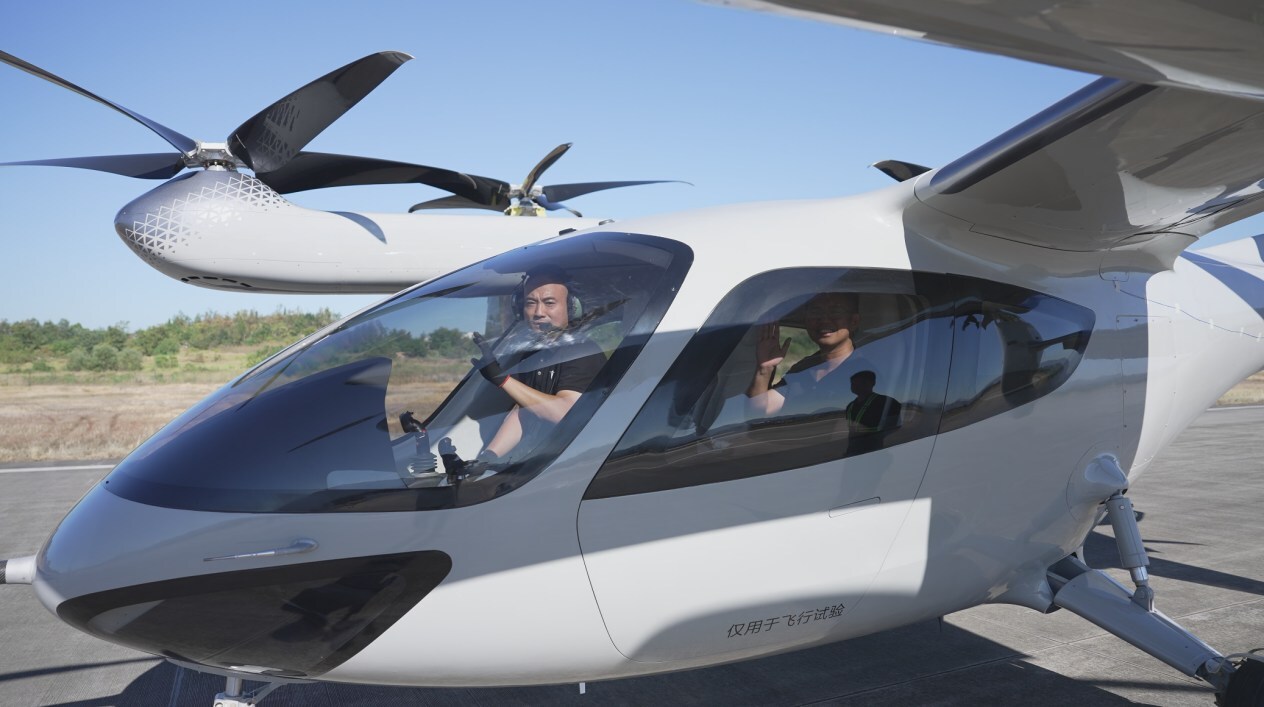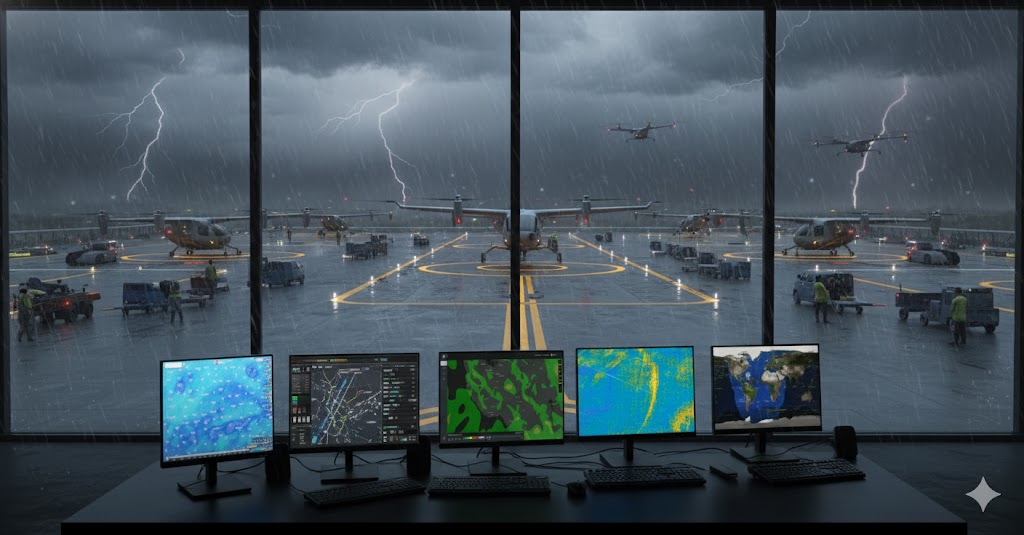On June 17, 2025, aviation regulators from five countries released a roadmap that could determine whether urban air mobility succeeds or fails. The National Aviation Authorities Network, comprising the US FAA, the UK CAA, Australia's CASA, Transport Canada, and New Zealand's CAA, has published its "Roadmap for Advanced Air Mobility Aircraft Type Certification." This matters because the low-altitude economy faces a critical bottleneck. Electric vertical takeoff and landing aircraft don't fit neatly into existing rules designed for helicopters and airplanes. The result? Every Western eVTOL company missed its 2024 certification targets.
Market Stakes and Regulatory Reality
The global advanced air mobility market reached $11.5-15.6 billion in 2024, with projected annual growth rates of 20.6-24.8% through 2034. But regulatory complexity threatens this potential.
The low-altitude economy encompasses all commercial aviation activities in this airspace, including drone operations, which often occur below 400 feet (120 meters) in most jurisdictions. Urban air mobility represents just one of the LAE components, alongside cargo delivery, infrastructure inspection, agriculture, and emergency services. eVTOL aircraft operate in the low-altitude economy typically below 1,000 meters (3,281 feet) for urban operations, though some applications extend to 3,000-4,000 meters (9,843-13,123 feet). These vehicles serve multiple markets: urban air mobility, emergency medical services, cargo delivery, agricultural applications, and tourism operations.
The certification challenge arises from the fact that eVTOL aircraft combine characteristics of helicopters and airplanes. They use multiple electric rotors for vertical takeoff and landing, often with wings for efficient forward flight. This hybrid design creates what regulators refer to as "regulatory gaps."
A 2023 US Department of Transportation audit revealed significant internal disagreements within the FAA regarding certification approaches. Some advocated for Part 23 small aircraft regulations, others pushed for special class aircraft rules under 14 CFR 21.17(b). These disputes contributed to widespread delays.
The Cooperation Genesis
Acting FAA Administrator Chris Rocheleau explained the alliance's rationale at the Paris Air Show: "The challenges of certifying these aircraft are not unique, and that's why we've partnered with the five countries to ensure this broad cooperation exists as we continue to develop this technology."
This cooperation emerges during intense technological competition between nations. Yet the low-altitude economy's complexity, interconnected air traffic, shared safety requirements, and global supply chains create natural incentives for collaboration over competition.
Six Principles Framework
The roadmap establishes six core principles that will guide certification decisions through 2027 and beyond.
Safety and Innovation Balance
Traditional aviation certification relies on decades of operational experience with conventional aircraft. These standards, applied rigidly to new technologies, can delay beneficial innovations.
The roadmap introduces a "safety continuum" approach. Instead of uniform standards, regardless of use case, certification requirements scale based on passenger count, operational complexity, and environmental factors. A single-seat recreational eVTOL in rural areas faces different requirements than a multi-passenger air taxi in dense urban airspace.
Approximately 60% of the AAM certification requirements already exist in current aviation standards. The challenge lies in the remaining 40%—novel eVTOL technologies requiring new safety assessment approaches.
Harmonized Type Certification
The roadmap's most significant element is its three-phase harmonization process.
Phase one emphasizes performance-based requirements over prescriptive regulations. Instead of dictating specific solutions, standards specify the required outcomes while allowing manufacturers flexibility in achieving them. This suits eVTOL aircraft, which use novel technologies that don't fit traditional regulatory categories.
Phase two seeks convergence where differences exist between nations. The most significant gap lies between the FAA's Advisory Circular 21.17-4 for powered-lift certification and the UK CAA's adoption of EASA SC-VTOL standards. Both provide tiered AAM approaches but differ in technical requirements and safety thresholds. The roadmap commits to aligning these standards by January 2027.
Phase three applies mutually accepted Means of Compliance for streamlined validation across the network. This offers manufacturers the most practical benefit—certification in one network country gains easier recognition in the other four, dramatically reducing international market entry time and costs.

Certification Approach Comparison
The complexity of harmonizing certification standards across the NAA Network becomes clear when examining each country's current regulatory framework. While all five nations share common safety objectives, their approaches differ significantly in implementation and requirements.
| Authority | Certification Framework | Safety Level | Key Standards | Propulsion Certification |
|---|---|---|---|---|
| US FAA | Part 21.17(b) special class powered-lift aircraft | 10^-8 for 2-6 passengers | Case-by-case certification with airworthiness criteria derived from existing regulations | Engines certified under aircraft airworthiness criteria |
| UK CAA | EASA SC-VTOL adoption | 10^-9 for passenger operations (commercial aircraft level) | Exceptional Condition for VTOL with a performance-based approach | SC E-19 for electric/hybrid propulsion systems |
| Australia CASA | National equivalent of Part 21.17(b) | Aligned with the FAA approach | Special class aircraft certification | Follows the FAA model |
| Transport Canada | National equivalent of Part 21.17(b) | Aligned with the FAA approach | Special class aircraft certification | Follows the FAA model |
| New Zealand CAA | Flexible approach | Variable based on operation | Adaptable framework | Case-by-case assessment |
The table reveals the fundamental divide between the US-led approach (followed by Australia and Canada) and the UK's adoption of European standards. The most significant difference lies in safety assurance levels—the UK requires a safety level of 10^-9, matching commercial aviation standards. At the same time, the US accepts a safety level of 10^-8 for smaller passenger operations. This order-of-magnitude difference in safety requirements represents the core challenge for harmonization efforts.
Implementation Timeline and Milestones
The NAA Network roadmap establishes an ambitious but structured timeline for achieving certification harmonization by January 2027. The implementation follows a three-phase approach with specific milestones and dependencies.
2025: Foundation Phase
Q2 2025
-
NAA Network roadmap publication (June 17)
-
Industry engagement at the Paris Air Show
Q3-Q4 2025
-
Performance-based requirements development (Phase 1 ongoing)
-
FAA vertiport testing completion target
-
Congress-mandated performance-based design document publication
2026: Convergence Development
Q1 2026
-
Detailed technical discussions between authorities begin
-
Identification of specific requirement differences
-
Development of reconciliation approaches for Phase 2
Q2-Q3 2026
-
Standards convergence negotiations intensify
-
Technical working group recommendations
-
Draft harmonized requirements testing
Q4 2026
-
Final convergence discussions
-
Preparation for January 2027 harmonization deadline
2027: Harmonization Achievement
January 2027
-
Target date for eliminating eVTOL airworthiness requirement differences
-
Phase 2 convergence completion
-
Transition to Phase 3 implementation
Mid-2027
-
FAA comprehensive advisory circular publication on VTOL aircraft
-
Performance data from testing campaigns is available
-
Mutually accepted Means of Compliance implementation begins
Q4 2027
-
Phase 3 streamlined validation processes are operational
-
New information-sharing protocols are active
-
Bilateral agreement modifications completed
Critical Dependencies
The timeline faces several critical dependencies that could impact the achievement of the January 2027 target. FAA testing campaigns must be completed by the end of 2025, with results not available until mid-2027. This creates potential tension between the harmonization timeline and data availability for informed decision-making.
Industry experts suggest even mid-to-late 2027 may be "aspirational," with realistic timelines extending to 2028-2030 for first eVTOL type certifications. This reality check highlights the complexity of technical coordination required between historically independent regulatory authorities operating under different safety philosophies and institutional frameworks.
The success of this timeline depends heavily on political will, resource allocation, and the ability of participating authorities to overcome institutional resistance to unprecedented levels of international regulatory coordination in aviation certification.
Collaboration Beyond Bilateral Agreements
The third principle extends influence beyond the five founding members. The roadmap requires coordination with other aviation authorities conducting domestic AAM certification projects.
This approach recognizes the aerospace industry's global nature. Major eVTOL manufacturers, such as Joby Aviation, Archer, and Lilium, have international operations and global ambitions. Traditional aerospace companies. Airbus, Boeing, and Bell Textron develop AAM capabilities for worldwide deployment. Success depends on multi-market certification recognition, not just approval from the home country.
The roadmap emphasizes coordination with standards development organizations, such as ASTM International, SAE International, and RTCA. This reduces duplication, transfers knowledge between authorities, and provides coordinated influence on industry standards development.
Industry Response
The industry response at the Paris Air Show 2025 revealed a strategic alignment around harmonized certification, with major manufacturers viewing international standardization as critical for the viability of their business models. CEOs from four major eVTOL companies. Adam Goldstein (Archer), JoeBen Bevirt (Joby Aviation), Kyle Clark (BETA Technologies), and Sébastien Vigneron (Wisk) attended, alongside US Transportation Secretary Pete Buttigieg.
Goldstein called the announcement a "bat signal" for the AAM industry, stating, "eVTOLs will be built—they will be certified and brought around the world". His confidence reflects industry relief at receiving clear regulatory direction after years of uncertainty.
Clark emphasized the economic importance of harmonization, noting that AAM technology's full potential cannot be realized "if it is constrained to a particular market." This reflects reality: many AAM business cases depend on sufficient scale across multiple markets to justify substantial development and manufacturing investments.
The enthusiasm stems from practical experience with multi-jurisdictional certification challenges. Companies like Joby and Archer have been working through FAA certification for years, gaining firsthand experience with the complexity and resource requirements. Leveraging certification work across multiple international markets significantly reduces global deployment barriers.
However, Vigneron acknowledged that the roadmap represents just the beginning: "It's on us to make it happen and turn it into a reality". Industry leaders recognize that regulatory harmonization, although necessary, is insufficient for achieving AAM success. Companies must still execute on the technical challenges of developing safe, reliable, and economically viable aircraft.
Technical Challenges
The roadmap requires regulators to assess technologies without direct aviation precedent. eVTOL aircraft incorporate distributed electric propulsion systems, advanced flight control software, and new battery technologies, each presenting unique certification challenges.
Distributed electric propulsion poses particular challenges. Unlike traditional aircraft with one or two large engines, many eVTOL designs feature multiple smaller electric motors driving individual rotors. This distributed approach offers safety benefits through redundancy but creates new failure modes and system integration complexity that traditional certification approaches weren't designed to address.
Software certification presents significant challenges for AAM aircraft, many of which rely heavily on fly-by-wire flight control systems and autonomous capabilities. Traditional aircraft software certification was developed for systems with limited functionality and apparent human oversight. AAM aircraft, particularly those designed for eventual autonomous operation, require new software assurance approaches that handle the complexity of modern flight control systems while maintaining aviation's high safety levels.
Battery technology presents another novel challenge. While electric propulsion has been used in smaller aircraft, the scale and criticality of battery systems in eVTOL aircraft are unprecedented in the commercial aviation sector. Regulators must develop new standards for battery safety, performance, and reliability, taking into account aviation's unique operating environment while leveraging lessons from the automotive and consumer electronics industries.
Economic Implications
The roadmap's economic implications extend beyond the immediate benefits for eVTOL manufacturers. Harmonizing certification standards could reshape the global aerospace industry by reducing international trade barriers and enabling more efficient allocation of research and development resources.
For manufacturers, the most immediate benefit is the reduction of certification costs and timelines. Under traditional bilateral recognition agreements, companies seeking to operate across multiple countries typically undergo separate validation processes in each jurisdiction, even for identical aircraft designs. These processes take years and cost tens of millions per country. The roadmap's streamlined validation approach could significantly reduce these costs and timelines.
Benefits extend beyond direct cost savings to improved capital access and enhanced business model viability. Investors consistently cite regulatory uncertainty as a major AAM risk factor. The clarity and predictability of harmonized international standards could reduce regulatory risk, potentially lowering capital costs and accelerating industry investment.
The roadmap affects competitive dynamics within the AAM industry. Companies achieving certification under the harmonized framework gain significant advantages in international market expansion compared to those navigating country-by-country processes. This could accelerate industry consolidation as companies with early certification success gain market share and access to capital, enabling them to outcompete slower rivals.
Global Implications
The formation of the NAA Network has implications that extend beyond the five participating countries. The initiative represents significant development in global competition for emerging aviation technology leadership, with potential impacts on international trade, technology transfer, and geopolitical relationships.
The NAA Network standards could become de facto global AAM certification standards. The five countries represent some of the world's most advanced aviation markets and regulatory authorities. Their combined market size and regulatory influence could create strong incentives for global manufacturers to meet NAA Network standards, even if they initially operate primarily in other markets.
This dynamic could particularly affect China, which has ambitious AAM development programs and has its regulatory framework in place. Chinese companies, such as EHang, have achieved specific eVTOL aircraft certifications within China's regulatory system. However, global market access through NAA Network certification could create competitive pressures for Chinese manufacturers to seek harmonized framework certification, potentially requiring design and operational adaptations to meet Western safety standards.
Implementation Challenges
Despite surrounding enthusiasm, significant implementation challenges remain. The ambitious January 2027 timeline for harmonized standards requires unprecedented coordination between historically independent regulatory authorities.
Technical complexity represents a major challenge. Harmonizing different regulatory approaches that evolved independently over decades involves reconciling philosophical differences in safety regulation and risk management. The differences between FAA's AC 21.17-4 and EASA's SC-VTOL standards reflect these different approaches.
Political and institutional challenges may exceed technical ones. Aviation regulators are typically conservative institutions with strong independence cultures and a risk-averse approach. Required coordination levels exceed traditional regulatory practice and may face internal agency resistance.
Implementation requires significant resources from participating authorities. Developing new standards, coordinating between agencies, and implementing new validation processes requires substantial personnel, training, and systems investments. These resource requirements arise when the demands of rapid technological change across multiple aviation segments already stretch many aviation authorities.
Path Forward
The roadmap aims to eliminate differences in eVTOL airworthiness requirements by January 2027, striking a balance between industry urgency and safety requirements.
Implementation follows the three-phase harmonized certification approach. Phase one, focusing on performance-based requirements, is already underway as individual authorities develop AAM certification frameworks. The FAA's AC 21.17-4 publication and the UK CAA's SC-VTOL adoption provide concrete frameworks that serve as the foundations for harmonization.
Phase two, seeking convergence where differences exist, represents the most technically challenging aspect of implementation. This requires detailed technical discussions between participating authorities to identify specific requirement differences and develop reconciliation approaches.
Phase three, applying mutually accepted Means of Compliance, requires developing new administrative and technical processes for sharing certification information and coordinating validation activities. This may necessitate adjustments to existing bilateral agreements and the establishment of new information-sharing protocols and systems.
Looking Beyond 2027
The roadmap's implications extend well beyond January 2027. The framework is intended as a "living document" evolving as the AAM industry matures and new technologies emerge.
One significant long-term implication is the roadmap's potential as a model for international regulatory cooperation in other emerging technology areas. Aviation has historically led the way in international standardization and collaboration. NAA Network success could provide templates for addressing regulatory challenges in autonomous vehicles, space transportation, and other emerging technologies.
The roadmap anticipates the evolution of AAM technology beyond the current piloted eVTOL aircraft. The framework's incremental "crawl, walk, run" approach explicitly acknowledges industry progression from piloted aircraft to remotely piloted aircraft and eventually fully autonomous operations.
Long-term success will be measured by impact on AAM technology deployment and adoption. If harmonized certification succeeds in reducing international market access barriers and accelerating the deployment of safe and reliable AAM services, it could contribute to realizing the full potential of these technologies.
The environmental implications could be significant. Many eVTOL aircraft are designed to be quieter and cleaner than traditional helicopters, potentially enabling new urban air transportation types previously impractical due to noise and emissions concerns. Successful regulatory harmonization could accelerate the deployment of cleaner technologies and contribute to achieving sustainability goals in urban transportation.
The NAA Network roadmap represents more than regulatory documentation; it embodies a fundamental shift in how global aviation approaches emerging technologies. By prioritizing international cooperation over national competition and innovation over rigid historical precedent, these five nations have charted a course that could determine whether urban air mobility becomes a reality or remains grounded in regulatory complexity.
The challenges ahead are substantial, but the potential rewards make the effort worthwhile. The global AAM market represents not just economic opportunity but a chance to address pressing urban challenges, from reducing traffic congestion and improving emergency medical response to providing new transportation options for underserved communities.
As the first eVTOL aircraft navigate certification under this framework, they'll write the first chapters of a new aviation era. Success depends not just on the technical design merits, but also on the effectiveness of international regulatory cooperation that the NAA Network roadmap represents.




